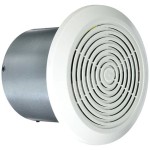Pump for Bathroom in Basement: A Comprehensive Guide
Installing a bathroom in a basement presents unique challenges compared to above-ground plumbing. The primary hurdle is overcoming gravity to move wastewater up to the main sewer line. A pump is a critical component in this scenario, ensuring efficient and reliable waste removal. This article explores the various types of pumps suitable for basement bathrooms, factors to consider when selecting a pump, installation considerations, maintenance practices, and potential troubleshooting issues.
Types of Pumps for Basement Bathrooms
Several types of pumps are designed for handling wastewater in basement bathrooms. The selection depends on the scope of the bathroom, the volume of wastewater anticipated, and the distance and height the wastewater needs to be pumped.
1. Sump Pumps: While primarily designed for groundwater removal and preventing flooding, a standard sump pump is not suitable for handling sewage. They are typically designed for clear water and lack the capacity to process solid waste. Attempting to use a standard sump pump for sewage can lead to clogging, pump failure, and potential sanitation issues.
2. Sewage Ejector Pumps: Sewage ejector pumps are specifically designed to handle all types of wastewater, including solids, from a toilet, shower, and sink. These pumps typically sit in a collection basin below the floor. When the basin fills to a certain level, the pump activates, macerating solid waste and pumping everything up to the main sewer line. Sewage ejector pumps are robust and reliable, capable of handling the demands of a full bathroom.
3. Macerating Toilet Systems: Macerating toilet systems are self-contained units that include a toilet and a built-in macerator pump. The macerator grinds solid waste into a slurry before pumping it through a narrow-diameter pipe to the main sewer line. These systems offer flexibility in installation as they don't require breaking the floor for a below-floor basin. They are a good option for smaller bathrooms or situations where a full sewage ejector system is not feasible.
4. Grinder Pumps: Grinder pumps are similar to sewage ejector pumps but are more powerful and designed for heavier-duty applications. They are capable of grinding solids into a finer slurry, allowing them to be pumped over longer distances and against greater vertical head. Grinder pumps are typically used in situations where multiple fixtures are connected to the pump or where the wastewater needs to be pumped a significant distance.
The selection of the appropriate pump type depends on the specific needs of the basement bathroom installation. A sewage ejector pump is generally suitable for a standard bathroom with a toilet, sink, and shower. A macerating toilet system might be a better choice for a smaller bathroom or where floor demolition is undesirable. Grinder pumps are reserved for more demanding applications with high wastewater volume or challenging pumping requirements.
Factors to Consider When Selecting a Pump
Choosing the right pump for a basement bathroom involves evaluating several key factors. These factors will ensure the selected pump meets the specific requirements of the installation and provides reliable performance.
1. Flow Rate and Head: Flow rate refers to the volume of wastewater the pump can move per unit of time, typically measured in gallons per minute (GPM). Head refers to the vertical distance the pump needs to lift the wastewater, plus any friction losses in the pipe. Selecting a pump with adequate flow rate and head capacity is crucial for effective waste removal. Overestimating these values is preferable to underestimating, as an undersized pump will struggle to keep up with demand, leading to potential backups and pump failure.
2. Solids Handling Capacity: The ability of the pump to handle solid waste is a critical consideration, especially for pumps connected to toilets. Sewage ejector pumps and grinder pumps are designed to handle solids, while macerating toilet systems have a built-in macerator. The pump's specifications will indicate the maximum size of solids it can handle. Selecting a pump with sufficient solids handling capacity will prevent clogging and ensure reliable operation.
3. Pump Construction and Materials: The materials used in the pump's construction affect its durability and resistance to corrosion. Pumps made from cast iron, stainless steel, and engineered plastics are commonly used for wastewater applications. Stainless steel is particularly resistant to corrosion and is a good choice for harsh environments. The type of seals and impellers used also affects the pump's performance and longevity. High-quality components will ensure a longer lifespan and reduced maintenance requirements.
4. Power Requirements: The pump's power requirements should be compatible with the available electrical supply. Sewage ejector pumps and grinder pumps typically require a dedicated 120V or 240V circuit. It's important to ensure the electrical circuit is properly grounded and protected by a ground fault circuit interrupter (GFCI) for safety. Macerating toilet systems often have lower power requirements and can be plugged into a standard outlet.
5. Noise Level: Pump operation can generate noise, which can be a concern in residential settings. Some pumps are designed with noise-reducing features, such as vibration dampening mounts and insulated housings. Researching the noise levels of different pumps and selecting a model that operates quietly can minimize disruption.
6. Alarm System: A high-level alarm is a crucial safety feature for sewage ejector pumps and grinder pumps. The alarm will alert the homeowner to a potential pump failure or overflow condition. This allows for prompt corrective action to prevent sewage backups and property damage. Alarms can be audible, visual, or connected to a home automation system for remote monitoring.
7. Brand Reputation and Warranty: Choosing a pump from a reputable manufacturer with a solid track record is advisable. Look for pumps with a comprehensive warranty that covers parts and labor. A longer warranty period indicates the manufacturer's confidence in the product's reliability. Reading online reviews and seeking recommendations from plumbers can provide valuable insights into the performance of different pump brands.
Installation and Maintenance Considerations
Proper installation and regular maintenance are essential for ensuring the long-term performance and reliability of a basement bathroom pump. Following best practices during installation will prevent common problems and extend the pump's lifespan.
1. Professional Installation: While some homeowners may attempt to install a pump themselves, professional installation is highly recommended, especially for sewage ejector pumps and grinder pumps. A qualified plumber will have the expertise to properly size the pump, connect the plumbing and electrical systems, and ensure the system meets local building codes. Incorrect installation can lead to leaks, backups, and electrical hazards.
2. Proper Venting: Adequate venting is crucial for proper pump operation and preventing sewer gases from entering the home. The vent pipe should extend above the roofline and be sized according to local plumbing codes. Insufficient venting can cause airlocks and reduce the pump's efficiency.
3. Check Valve Installation: A check valve should be installed on the discharge pipe to prevent backflow of wastewater into the basin. The check valve should be located close to the pump to minimize the amount of water that flows back when the pump shuts off. Regular inspection of the check valve is recommended to ensure it is functioning properly.
4. Basin Access and Maintenance: The collection basin for sewage ejector pumps and grinder pumps should be easily accessible for inspection and maintenance. The basin should be made of durable materials and properly sealed to prevent leaks. Regular cleaning of the basin to remove debris and sediment is recommended.
5. Regular Inspection and Cleaning: Regular inspection of the pump, basin, and piping is essential for identifying potential problems early on. Check for leaks, unusual noises, and signs of corrosion. The pump should be cleaned periodically to remove debris and prevent clogging. Some pumps have built-in cleaning cycles or can be easily disassembled for cleaning.
6. Avoid Flushing Inappropriate Items: To prevent clogging and damage to the pump, avoid flushing inappropriate items down the toilet, such as feminine hygiene products, diapers, paper towels, and excessive amounts of toilet paper. These items can clog the pump and cause it to fail. Using a septic-safe toilet paper can also help to reduce the risk of clogging.
7. Winterization: In cold climates, it's important to protect the pump and piping from freezing temperatures. Insulating the pipes and basin can prevent freezing and potential damage. In extreme cases, a heat tape can be used to provide additional protection.
8. Emergency Backup Power: Consider installing a backup power system, such as a generator or battery backup, to ensure the pump continues to operate during power outages. Power outages can lead to sewage backups if the pump is unable to operate. A backup power system provides peace of mind and protects against potential property damage.
By following these installation and maintenance guidelines, homeowners can ensure their basement bathroom pump operates reliably and efficiently for many years. Regular maintenance and prompt attention to any potential problems will prevent costly repairs and ensure a comfortable and sanitary living environment.

All About Basement Bathroom Systems Riverbend Home

Basement Toilet Pump Plumbing Inspections Internachi Forum

Everbilt 1 2 Hp Upflush System Sewage Ejector Pump Kit Sw07501tc The Home

Sewage Ejector Pump Vs Upflush Toilet

How To Add A Bathroom Basement The Easy Way Diy Family Handyman

Basement Sump Pumps Zoeller Pump Company

How To Add A Bathroom Basement The Easy Way Diy Family Handyman

Basement Plumbing For Ejector Pump Up To Main Sewage Line

My Flo700 Dreamsani Macerating Upflush Toilet Basement With 700w Pump

Basement Bathroom Ejector Pump System Do I Need One
See Also







